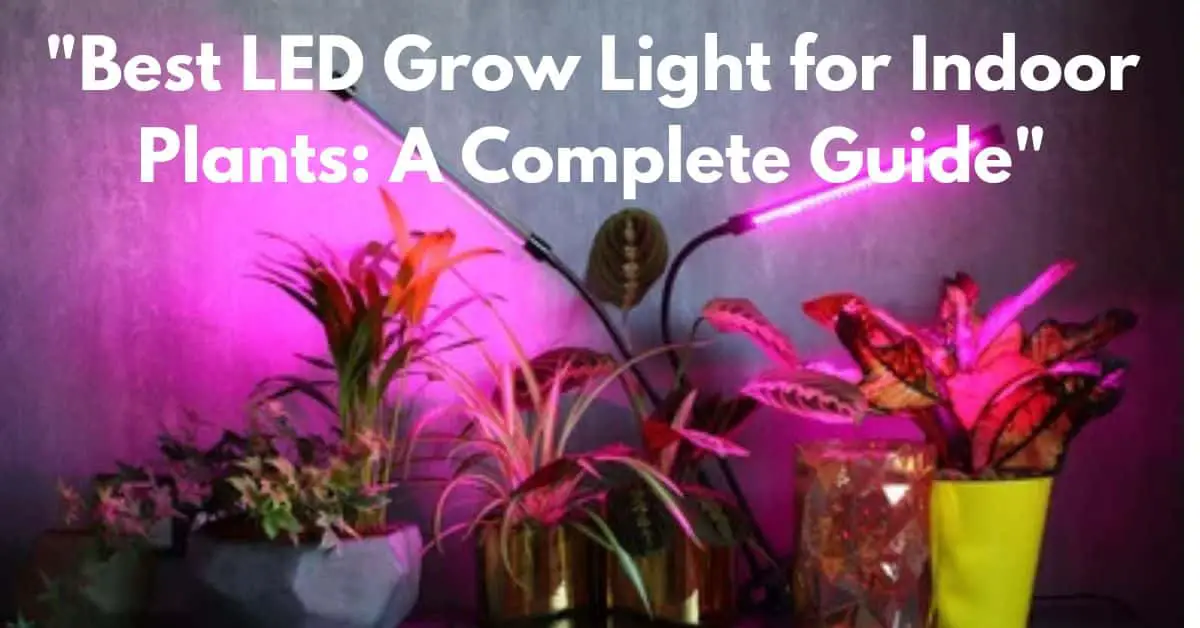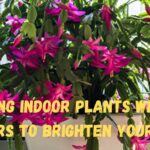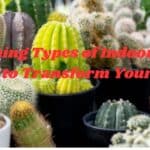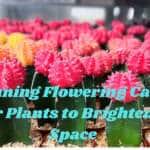Bringing plants into our homes adds beauty, improves air quality, and can even boost our mood. But keeping plants happy indoors can sometimes be tricky—especially when it comes to light. Many plants need more sunlight than we realise, and that’s where LED grow lights come to the rescue. If you’ve ever wondered whether a grow light could help your plants, or which type to buy, this guide will walk you through everything you need to know to make an informed decision and set up the perfect lighting for your indoor garden.
Table of Contents
Why LED Grow Lights for Indoor Plants?
LED grow lights are a game-changer for indoor gardeners. Unlike traditional fluorescent or incandescent bulbs, LED lights are designed to emit specific light spectrums that plants need to photosynthesize. In addition to being energy-efficient and long-lasting, they don’t produce much heat, which means you can place them close to your plants without burning delicate leaves.
Think of LED grow lights as an affordable, sustainable way to bring a bit of the sun indoors. Whether you live in a shady apartment or just want to give your plants a boost during shorter winter days, a good LED grow light can make all the difference.
Understanding Light Spectrum and How It Affects Plant Growth
Plants need different light wavelengths at various stages of growth. Here’s a quick breakdown of what each color spectrum does for plants:
- Blue Light: Helps with leaf growth and is essential for seedlings and young plants. If you want bushier plants with lots of healthy leaves, look for LED grow lights with plenty of blue light.
- Red Light: Supports flowering and fruiting. It’s important for mature plants, especially those that bloom or produce fruits. Red light is a great way to keep your flowering plants, like African violets or certain succulents, happy indoors.
- Full Spectrum: Many LED grow lights offer a full spectrum, combining both blue and red light, which can support plants at every stage of growth. Full-spectrum LED grow lights are ideal for a mixed indoor garden with both leafy plants and flowers.
Choosing the Right LED Grow Light for Your Indoor Garden
When selecting a grow light, it’s essential to consider your specific plants’ needs, the space you have, and your budget. Here are some common types of LED grow lights that you’ll come across:
1. Clip-On LED Grow Lights
Perfect for small spaces or single plants, clip-on grow lights can be easily attached to desks, shelves, or plant stands. They’re flexible and often come with adjustable arms, making them great for targeting specific plants. These lights are an affordable choice and easy to use in apartments or homes with limited space.
Example:
I started using a clip-on LED grow light for my snake plant, which wasn’t getting enough light in a dark corner. Within weeks, I noticed new, healthy leaves, and it now looks as good as if it were sitting in a bright window.
2. Panel LED Grow Lights
Panel LED lights are flat, compact, and can cover a larger area, making them ideal for bigger indoor gardens or several plants grouped together. They’re versatile, and you can mount them above a plant shelf or even hang them from the ceiling if you have high ceilings and a large indoor garden setup.
3. LED Grow Light Bulbs
If you’re on a budget and want a quick solution, LED grow light bulbs are a great option. You can screw them into regular light fixtures, which makes them easy to integrate into your home without a dedicated grow light setup. They’re particularly handy for tabletop plants and small indoor gardens.
4. Standalone LED Grow Light Units
For serious indoor gardeners, standalone LED units provide full-spectrum lighting for multiple plants and generally come with adjustable settings. Many standalone units include timers, dimmable lights, and adjustable heights. They’re perfect for those with a substantial indoor plant collection or anyone wanting a more professional setup.
Key Features to Look for in an LED Grow Light
Once you’ve chosen the style of LED grow light that suits your space, consider the following features to ensure you get the best results:
- Full Spectrum: Look for a light that offers a full spectrum if you’re growing a variety of plants. This ensures that you’re meeting both vegetative and flowering needs.
- Adjustability: Choose lights with adjustable arms or flexible positioning to make it easier to reach different parts of your plants as they grow.
- Timer: Timers can be lifesavers, allowing you to automate the light cycle for your plants. This is especially helpful if you travel or have a busy schedule.
- Energy Efficiency: LEDs are already energy-efficient, but it’s worth checking the wattage if you’re planning on running multiple lights for extended periods.
- Brightness Settings: Plants need different amounts of light depending on their species. Having dimmable lights or different brightness settings will allow you to customize for each plant.
How to Use LED Grow Lights for Optimal Results
1. Positioning the Light
Keep the grow light about 12-18 inches above most plants to mimic the sun’s distance. Too close, and you risk “light burn” on leaves; too far, and the light may be too weak to help. Plants with high light needs, like herbs, may benefit from being slightly closer to the light source.
2. Light Duration
Indoor plants typically need 12-16 hours of light daily. Some grow lights come with automatic timers, allowing you to set a cycle without having to remember to turn the light on and off each day. Longer winter nights and shorter days mean you may need to extend the duration, while summer daylight might allow you to shorten it.
Example:
When I got my first LED grow light, I noticed my pothos didn’t need more than about 12 hours of light per day, but my basil thrived with 16 hours. Now I adjust based on the season and each plant’s growth cycle.
3. Monitor Your Plants
Keep an eye on your plants and adjust the light as needed. If you see signs of stress—like leaves curling, yellowing, or turning brown—it may be time to change the light duration or distance.
Personal Tips for Using LED Grow Lights
When I first started using LED grow lights, I experimented with different styles before settling on panel lights for my main garden area and a clip-on for smaller plants. The biggest lesson I learned? Not all plants have the same light needs, and it’s essential to adjust as you go. For example, my succulent plants need much closer and more intense lighting than my tropical plants, which seem to do well with softer, indirect light.
One fun discovery was that my spider plant, placed under the grow light at the same time each day, started growing faster and putting out more “baby” plants than ever before. Now, I have a whole collection of spider plant babies!
Avoiding Common Mistakes with LED Grow Lights
- Not Adjusting the Distance: If your LED light is too close, your plants may become stressed. Start with the light farther away and adjust as needed.
- Ignoring Light Needs by Plant Type: Remember that different plants have different needs. Herbs, for example, require more direct light than ferns.
- Overuse of Light: Just because LED lights are cool to the touch doesn’t mean your plants need 24-hour light. Indoor plants still need a period of darkness to rest and grow.
Final Thoughts
LED grow lights are a fantastic tool for any indoor plant lover, especially when natural light is limited. With so many options available, there’s a grow light to fit every home and budget, from small clip-on lights to large panels for a serious indoor garden. With a bit of experimentation and regular observation, you’ll be able to give each plant in your collection exactly the light it needs to thrive.
So go ahead, light up your indoor garden with an LED grow light, and enjoy a happy, vibrant indoor space year-round!










